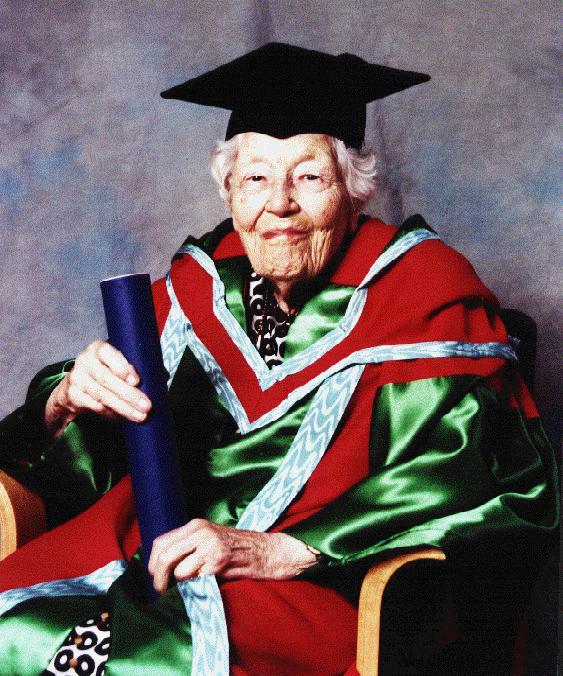
British CrystallographicAssociation
'Crystallography News'
December
2000
Dr H
Megaw Citation for Honorary Degree of Doctor of Science,
Queen's
University, Belfast, Northern Ireland, July 7, 2000
by
Professor
Ruth Lynden-Bell, School of Mathematics and Physics
Dr Helen Megaw is a crystallographer who is best known for her workdetermining the structure of ferroelectric crystals. She is a native ofNorthern Ireland who attended Queen's for a year before moving to get herdegrees of BA and PhD from the University of Cambridge. She returned toNorthern Ireland when she retired from the University of Cambridge in 1972.
It is difficult for us to imagine the scientific environment in thenineteen thirties. It was a time of depression with little money and fewjobs. Science departments were much smaller and more intimate. X-ray crystallographywas a new science which attracted a number of young women such as Dr Megawwho became distinguished scientists. In those pioneering days preparationof crystals and collection of data was more difficult and more skilledthan it is today. Another big difference, which today's graduates may findhard to imagine, was that there were no computers and the tedious and detailedcalculations which lead from the brightness of spots on a photographicplate to a three dimensional crystal structure were all done by hand. DrMegaw was one of the pioneers in this field. She completed her PhD on thestructure of ice in the early nineteen thirties. Then, after a couple ofyears' postdoctoral work in Vienna and Oxford, she spent seven years teachingin girls' schools in England and a year in an industrial research laboratory.After the second world war her career changed and she spent the rest ofher working life in Universities, mainly in the Cavendish Laboratory inCambridge. She became a Fellow of her old college, Girton, where she actedas Director of Studies in Physical Sciences encouraging and guiding generationsof young women scientists.
Her research work was concerned with ferroelectric crystals. You areall familiar with magnets which have two ends with opposite magnetic polarity.Ferroelectric crystals are the electric analogues with two ends with oppositeelectric polarity. As you can imagine they are important industrially.The source of the ferroelectricity lies in the arrangement of the atomsin the crystals and this was determined by Dr Megaw for an important classof ferroelectric crystals known as Perovskites. She then wrote a standardbook on "Ferroelectricity in Crystals".
She also did pioneering work on disorder in crystals and its effecton the X-ray diffraction patterns. She was awarded the Roebling Medal ofthe Mineralogical Society of America in 1989 and has an Island in the Antarcticnamed after her in recognition of her work on ice.

Dr Megaw, Queen's University wishes to recognise your contributionto science and the example that you have set to generations of young womenand young men. I now call upon the Dean of the Faculty of Engineering topresent Helen Megaw for the degree of Doctor of Science, honoris causa.